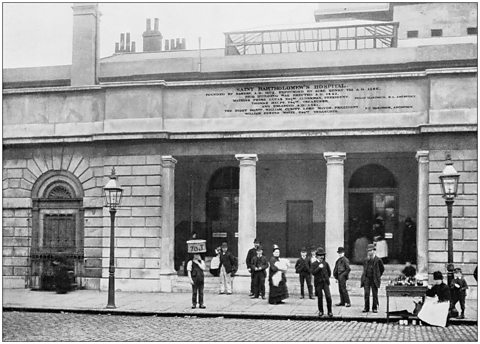The development of hospitals from the 16th to the 19th centuries
In the 1530s, following his dispute with the Pope, Henry VIII ordered the dissolution of all monasteries in England and Wales. This had a dramatic impact on patient care as the monasteries had been the main providers of medical care for many centuries. In some towns and cities, councils stepped in and took over the running of hospitals.
Hospitals endowed by the king or local councils

In London, the city authorities sent petitions to Henry VIII and later his son, Edward VI, asking them to keep open the cityвҖҷs hospitals. Both kings gave endowmentLand or property, the rents of which could be used to run the hospitals. for the running of five hospitals, including St BartholomewвҖҷs and St ThomasвҖҷ. Like medieval hospitals, these provided mainly for poor people who were sick, as rich people could afford doctors. St Mary Bethlehem continued its medieval role as a hospital for the mentally ill after it was granted a royal charter in 1547.
The royal endowments of land were not very generous and the hospitals were always short of money. However, this was an important development because for the first time the state, in the form of the king, had provided money for medical care.
Outside London, local councils had to find endowments to keep their hospitals open. In Norwich the council took over the infirmary of St Giles monastery. It began with just four women providing basic care. However, by the end of the 16th century it had added a barber (who bloodlettingThe process of bleeding a patient, either by using leeches or by cutting into a vein.), a surgeon and a bonesetter to its staff.
Many poorer areas were not so fortunate as there were very few hospitals and none of them had a resident doctor.
Voluntary hospitals endowed by wealthy individuals
The 18th century was the period of the The EnlightenmentThe 17th and 18th century movement in Europe that advanced rational scientific thinking. Several medical societies were founded, such as the one formed in Edinburgh in 1732. These encouraged new scientific methods and many new hospitals were opened.
The industrial revolution created great wealth. Some wealthy businessmen, eg Thomas Guy, a London printer, donated money to enable the opening of new voluntary hospitals to treat the growing population. These hospitals were run by volunteers and staffed by doctors working in unpaid posts. However, the quality of care in these hospitals was often poor.
Eleven new hospitals were opened in London and a further 46 across the rest of the country, eg AddenbrookeвҖҷs Hospital in Cambridge and the Bristol Royal Infirmary.
Development of hospitals in the 18th and 19th centuries
Slowly, hospitals began to change. Initially, they gave only basic care to the sick. Over time, they began to attempt to treat illness and carry out simple surgery, eg removing gallstones and setting broken bones.
Some also became centres of training for doctors and surgeons. Treatment was normally free, before the opening of the Royal College of Surgeons in 1800. The 18th century also saw the emergence of dispensaries, which provided medicines. An example is the Finsbury Dispensary, which opened in London in 1780.
Specialist hospitals
Alongside these general infirmaries, a number of specialist hospitals were set up during the 19th century. These included the London Chest Hospital in 1814 and the Free Cancer Hospital (now the Royal Marsden) in 1851. Perhaps the most famous is Great Ormond Street Hospital for Children, founded in 1852.
Isolation hospitals were also established in order to treat infectious diseases. For example, the Liverpool Fever Hospital was established in 1801 and the London Fever Hospital was established in 1802.